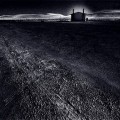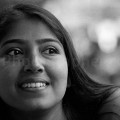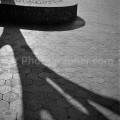Post-visualization is the idea behind building an image from multiple images. This idea could be the result of an emotional experience just like pre-visualization is. However this experience is triggered as the photographer is sifting through her images long after those have been shot. These images could be unrelated, but when combined, yields something that goes far beyond the documentary nature of the medium to a space where the artist is free to express herself in an entirely different way.
Before the digital age, this was done either by combination printing or photo-montage. Combination printing requires the same paper to be exposed using multiple negatives. The implementation is an extremely technical process, and the great Jerry Uelsmann is the supreme exponent of this technique. The montage technique requires pasting parts of other images on a base image. This is then photographed and printed the usual way. This is a very technical process as well. In either case, the result is often abstract and open to interpretation.Both combination printing or photo-montage are subject to falling victim to gimmickry, where the photographer merely shows off technique. Today we can use very efficient masking tools in digital post-processing. But how post-visualization creates better photographs? Certainly, random photoshopping of images is not post-visualization. Any well-considered photoshopping, even if it did create a beautiful picture is also not post-visualization. You can make landscape better by replacing a bland sky with a spectacular cloudscape. Yet I don’t consider this post-visualization; here the idea or the resulting picture is not unique.
I have done a lot of black and white printing. I also attended a workshop by Jerry Uelsmann at the International Center of Photography, New York City. Jerry would say the idea is more important than the process in the darkroom. While his images fascinate me, I could not be the extreme darkroom junkie one has to be to attain that level of technical expertise. If I ever came up on an idea, I could not express it in the darkroom that way. Anyway, I usually do not connect bits of un-related images to come up with something special. Much of Jerry’s time outside the darkroom is spent sifting through files of contact prints – looking for a trigger. But it is all right not to be able to connect the dots in that manner, even if the implementation in the digital age is much less painstaking.
Post-visualization is a creative process in photography. Like it is with many other things, it is not for everyone or everything.






